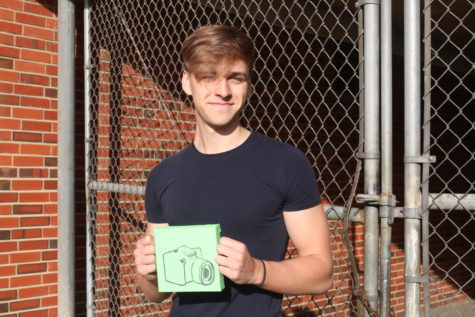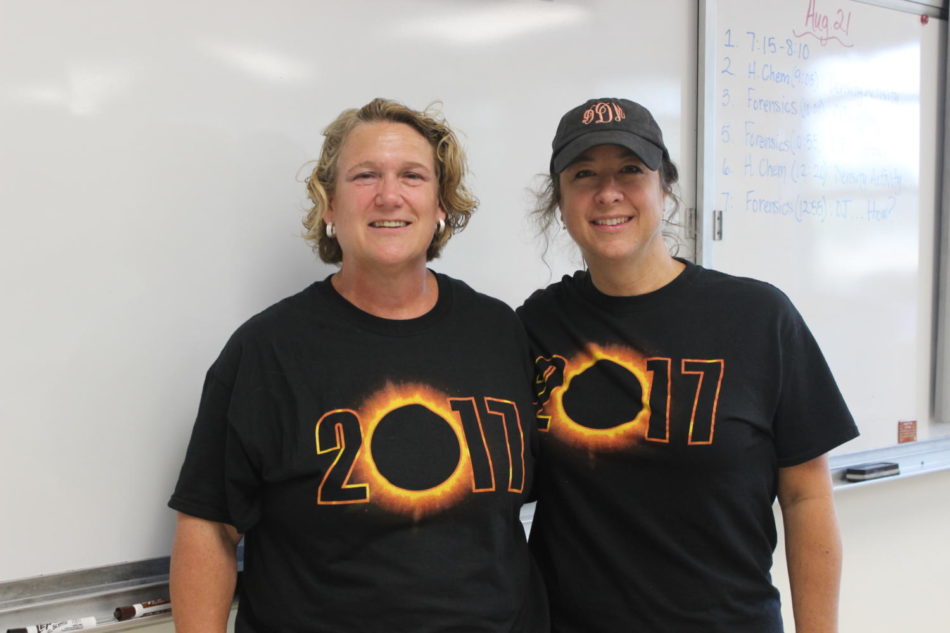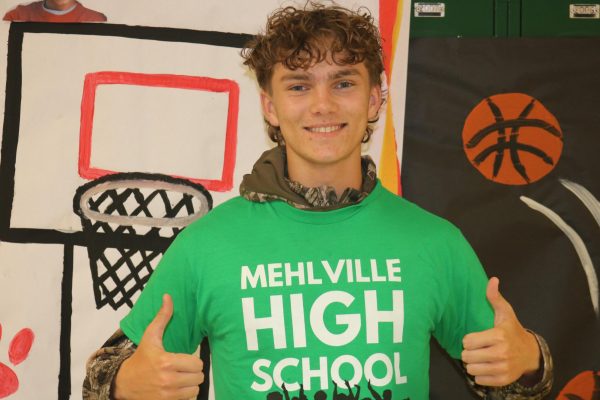Mehlville Gears Up For Eclipse 2017
Photo by Priyanka Chaudhary
Ms. Drew and Ms. Fritz rock their Mehlville Eclipse 2017 shirts.
Well over a year ago, the news of a total solar eclipse in the continental United States was released to the public and hotels in the line of totality immediately began selling out. The path of totality is 65 miles wide and will encompass portions of Oregon, Idaho, Wyoming, Nebraska, Missouri, Kentucky, Tennessee and South Carolina.
Although absolute totality will last just under two and a half minutes, it is a once in a lifetime opportunity that has not occurred in the United States since 1918. Americans across the country and travelers alike are swarming to experience the event in the millions. Viewing parties such as the one in Saint Louis at Jefferson Barracks will undoubtedly attract hundreds of people if not thousands, and will happen in innumerable counties. For smaller towns with excellent weather conditions from the west coast of Oregon to the east coast of South Carolina, this will shape up to be the biggest tourism event they have ever experienced. General tourism combined with the fact that 200 million people already live within a day’s drive of the total eclipse will result in what might be greatest temporary mass migration of humans to experience a natural event in U.S. history.
But how does it happen?
Every single day, the Moon rotates around the Earth once. This happens while we are continuing to revolve around the sun. Although this is generally regarded as common knowledge, many people do not understand exactly what this entails. With the solar eclipse impending, this phenomenon allows people all over the world to see a physical example of both of those facts happening right before their eyes. A solar eclipse happens when the Moon and the sun align with such precision to cast a shadow upon the Earth. The Moon is smaller than the Earth however, so it projects a shadow that is only visible in its entirety from certain positions on the Earth. This year, the area in which totality is viewable stretches across the continental United States, and luckily for us, passes through Saint Louis.
Let’s look at why that is and why it even happens. First, you should know what an eclipse really is. NASA describes an eclipse as “[What] takes place when one heavenly body such as a moon or planet moves into the shadow of another heavenly body”. In the case of the solar eclipse it’s all about the moon’s shadow specifically. When the moon is in the way of the sun, it casts a shadow on our planet, thus creating a visual spectacle for us as we watch the moon seemingly cover our source of light. However, because the Moon is smaller than the Earth, its shadow does not envelope the whole planet. From areas outside of the small belt, called the umbra, where the total eclipse is visible, one may only see a partial eclipse or none at all. Those people who can see only a partial eclipse are in the penumbra of the Moon. There are far more people not able to view the eclipse or just a portion of the eclipse, than are actually able to so this explains why many people who are expected to be in the Moon’s umbra are excited to see such a sight! Make sure that if you are viewing the eclipse, you do so safely with eclipse glasses or by looking at it through shadow projections on the ground.

Mirzad Kablic is a senior writer and columnist for Mehlville Media in Journalism 2. He is the writer behind The Long and Short of Fit, a fitness and fighting...

Priyanka Chaudhary is the senior editor-in-chief of Mehlville Media Student Prints. She is excited to work with her Journalism 2 staff and create amazing...





